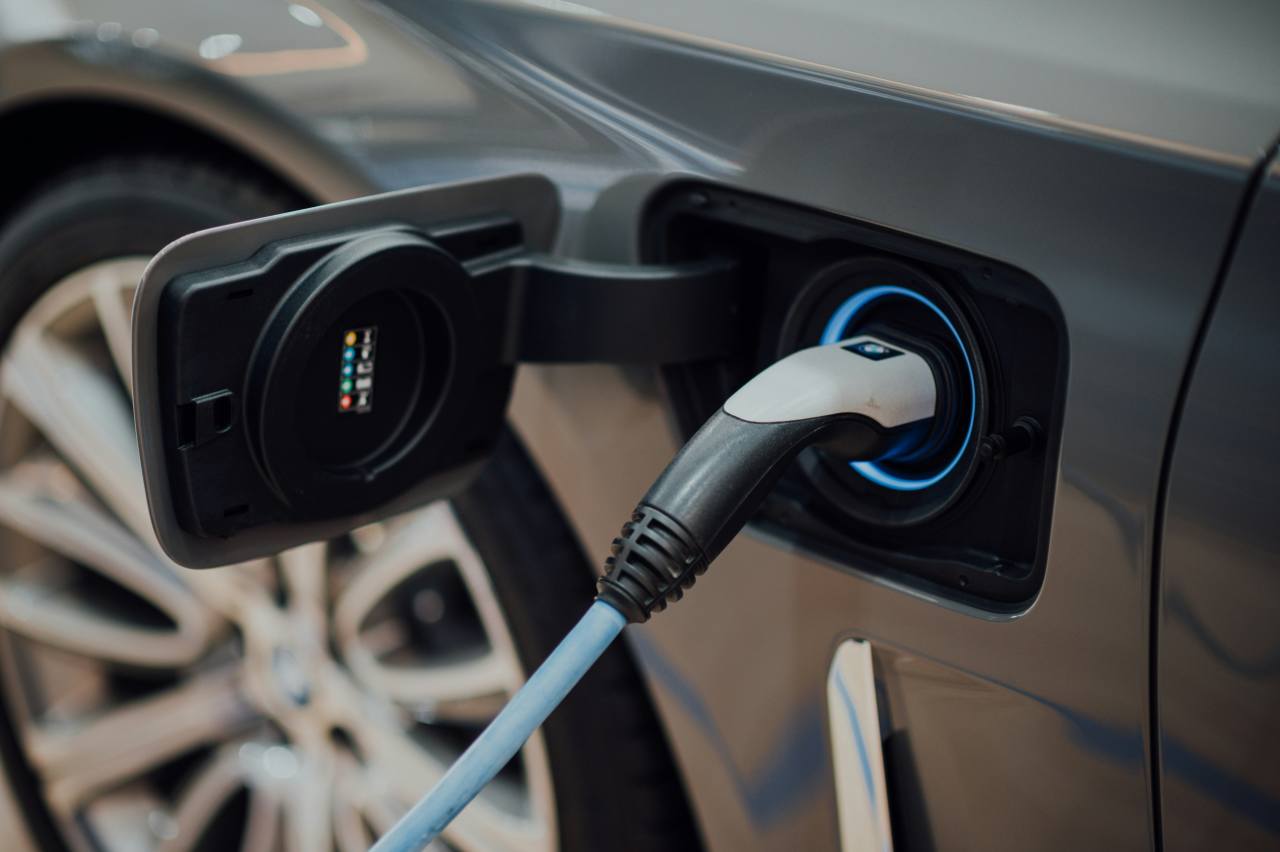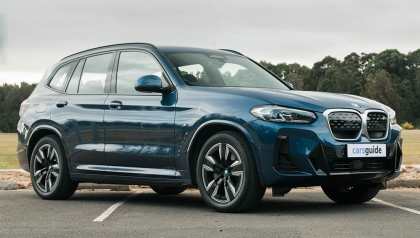Suddenly three-row all-electric SUVs are beginning to look like big business. And I don’t just mean physically big — though they are that, too — but also that there are now simply more of them, from more brands.
The Kia EV9 was the first to arrive, but wasn't alone on the mountain for long. The Hyundai Ioniq 9 will soon follow, and there’s the Mercedes-Benz EQS SUV, or — for something a little different — electrified people movers like the Zeekr 009 or Volkswagen ID.Buzz.
And now there’s this electric behemoth, the Volvo EX90, which has just touched down in Australia.
A big car means a big battery and big driving range, and the EX90 delivers on that, but a big battery can also mean a big sticker price, and the Volvo fulfils that promise, too, starting at around $125,000 for the cheapest model.
So, is the EX90 worth the investment?
Price and features – Does it represent good value for the price? What features does it come with? 8/10
8 / 10
The EX90 range arrives in two grades, the entry-level Plus Twin Motor, which starts at $124,990, and the top-spec Ultra Twin Motor Performance, which starts at $134,990 (both before on-road costs). Both share the same battery and driving range, but the latter produces more grunt.
That puts it somewhere between Kia and Hyundai and the German brands in terms of pricing, with Volvo suggesting it is trying to occupy a slightly lower rung on the premium ladder — at least in terms of sticker price — than brands like BMW and Mercedes-Benz.
The Plus rides on 20-inch alloys and there is a fixed panoramic glass roof with an optional sun shade. Then there’s LED lighting outside and inside there are leather-like seats made from mostly recycled plastic, which are heated in the first two rows.
You also get four-zone climate control, a 14-speaker Bose stereo that pairs with a 14.5-inch central screen (vertical) with Apple CarPlay and Android Auto, but also Google built-in, giving you access to native maps and apps. There’s also wireless phone charging and a heated leather steering wheel. The driver’s binnacle has been replaced by a 9.0-inch horizontal screen above the steering wheel.
Stepping up to the Ultra gives you ventilated seats up front, better High Definition Pixel headlights and a wondrous 25-speaker Bowers & Wilkins High Fidelity stereo.
Both models also get an always-on 5G connection, allowing for Over-The-Air updates to keep the EX90’s software fresh.
Design – Is there anything interesting about its design? 8/10
8 / 10
Big three-row family SUVs are probably not the style of cars most auto designers dream of penning, given practicality has to trump style in so many areas, but Volvo’s team has honestly done a stellar job of making the EX90 feel stylish and not look at all bloated.
Up front, the brand’s ‘Thor’s Hammer’ headlight signature frames an aero-friendly closed-over grille, while the sharp rainbow-shaped creases in the side body work, and the sharp, upwards-flowing crease behind the rear wheel, all combine to shrink the visual size of the EX90.
The only view I don’t love is at the rear, where a narrow glass house appears perched above the rear brake lights, giving the EX90 an almost Model Y-style look that doesn’t quite match the rest of this svelte seven-seat SUV.
Inside, the EX90 an eco-friendly (think recycled PET materials acting like leather) take on a now pretty familiar EV experience, with a giant central tablet arranged vertically, and a second horizontal screen above the steering wheel replacing the driver’s binnacle. But it all does exude a calming, quiet quality.
One negative thing, though, is the relentless march towards a buttonless society. In the EX90, even wing-mirror and steering wheel adjustments are made through the central screen, as are your climate and radio settings. It makes for a minimalist look, but it’s also simply slower and less intuitive to perform key tasks.

Practicality – How practical is its space and tech inside? 8/10
8 / 10
The EX90 is a sizeable proposition, stretching 5037mm in length (even longer than a LandCruiser 300 Series), 1964mm in width and 1744mm in height. It’s also the first EV-first SUV from the brand, which means it rides on a dedicated ‘skateboard’-style platforms that maximises cabin space.
That’s most keenly felt in the second row, with can slide forwards or backwards, but even positioned in a way that didn’t cut off the circulation of any adults sitting behind me, I had more than enough room (I’m 175cm) to sit comfortably. And even the easy-enough-to-access third row delivers surprising room (provided there are no NBA players riding the middle row).
Boot space is a boon, too. In some three-row SUVs you’re lucky to fit an envelope in the boot with all seven seats in place, but not so the EX90, which serves up a very useable 365 litres with seven humans on board. Drop the third row, and that number grows to 655 litres, and with the second row also stowed, the boot space swells to a massive 1040 litres.
Volvo’s integrated booster seat lives on in the middle of the second row, and all seats are super comfortable, and the kinds of thing you wouldn’t mind settling into for a long drive.
Both EX90 models will tow 2200kg – which isn’t quite enough to tow itself, given the big battery-equipped SUV weighs around 2780kg.
Under the bonnet – What are the key stats for its motor? 7/10
7 / 10
Both EX90 models are twin-motor, AWD affairs, with the Plus delivering a total 300kW and 700Nm, while the Ultra dials it up to 380kW and 910Nm. The sprint to 100km/h times for each are 5.9s and 4.9s respectively.
And if you’re wondering whether you need a large, three-row SUV that’s faster to 100km/h than 5.9s, the answer is you don’t. The Plus felt more than potent enough for me.
Efficiency – What is its driving range? What is its charging time? 7/10
7 / 10
Interestingly, both EX90 models share the same 111kWh lithium-ion battery, and both promise the same WLTP driving range of 570km, because both claim the same efficiency of 16.9kWh/100km. Weird, because more power usually means less efficiency and a smaller driving range.
When it comes time to charge, the EX90 is set up for 250kW DC fast charging, meaning 10-80 percent charged in 35mins. At home, a three-phase wallbox will take more like 10 hours. But if yours is only a 7kW connection, it will be slower still.
Driving – What's it like to drive? 7/10
7 / 10
The march of the the modern EV has given us driving nit-pickers less to talk about, because the experience behind the wheel has begun to become a little predicable. Electric motors mean smooth, constant acceleration with no lag or lumpy bits, and even big 2.5-tonne monsters can accelerate like hot hatches if there are enough motors on board.
And so it largely is with the EX90, which both models sporting a twin-motor, AWD powertrain that delivers plenty of grunt, easy forward progress, and a calm cabin ambience on most road surfaces.
We took on freeway driving, flowing country roads and slow-speed city stuff, and none of it delivered any hurdles the big Volvo couldn't clear, with the low-slung weight of the EX90 helping it feel planted, even in twistier stuff.
I also like the easy access to the break-regeneration options and the full-time or part-time AWD switch, which are glued to the bottom of the infotainment screen. It is also supremely quiet in the cabin, even at freeway speeds.
But there are some downsides. For mine, the steering is too light and artificial to inspire any real confidence. It's nice in the city, but less so when you're trying to be precise on a twisting country road. And while the twin-chamber air suspension does a great job of ironing out minor road blemishes, it does bouncy over bigger bumps, especially over the rear axle, which has a kind of pebble in a lake effect, sending a bouncy wave through the cabin.
I have to say, though, the screens are a challenge. Digging through sub-menus to access basic functions isn't much fun, and it did take an age to perform some key functions, like linking up Apple CarPlay.
Safety – What safety equipment is fitted? What is its safety rating? 9/10
9 / 10
Volvo doesn’t really talk ANCAP stars, suggesting that five is the absolute minimum standard, but the Swedish-Chinese brand reckons this is its safest car yet. For example, there’s not one but two in-cabin cameras monitoring the driver, while a total six radars scan the cabin “by the millimetre” to ensure no little humans are ever left behind.
There are side, curtain and front airbags, as well as a driver knee bag, as well as AEB, steering interventions that detects people and cyclists, a 360-degree camera, and LIDAR-based autonomous functions (active cruise, lane-keep assist etc.) that are intended to be updated over time as systems improve.
Ownership – What warranty is offered? What are its service intervals? What are its running costs? 7/10
7 / 10
The EX90 is covered by a five-year, unlimited-kilometre warranty, with servicing required annually. The good news is that, for the first five years of ownership, your service costs are built into the purchase price. Or, to put it another way, they're free.
Verdict
Big and beautiful, the EX90 is a premium-feeling offering in the now-growing seven-seat electric SUV space. Space and style abound, but I wouldn't be springing for the flagship model. Save your krona and aim for the entry-level instead.
Note: CarsGuide attended this event as a guest of the manufacturer, with travel, accommodation and meals provided.
Pricing Guides

Range and Specs
| Vehicle | Specs | Price* |
|---|---|---|
| Plus Twin Motor | Electric, 1 SPEED AUTOMATIC | $124,990 |
| Ultra Twin Motor Performance | Electric, 1 SPEED AUTOMATIC | $134,990 |






















































































.jpg)




.jpg)

